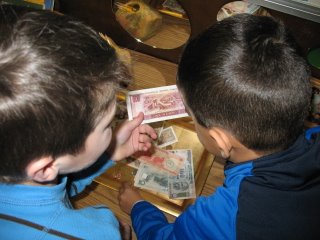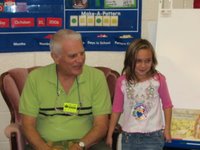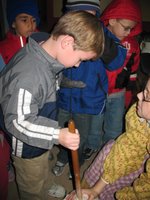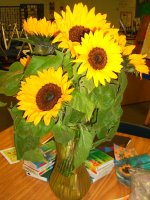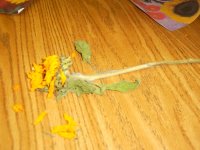Today the report cards for the first nine weeks are coming home. I hope you take the time to review it with your child. Remember to look at the positives and not just focus on what needs improvement. I was pleased with everyone's performance this grading period. Here are some tips I took from the leapfrog.com.
1. Take report cards seriously. While most teachers concede that report cards don't tell the whole story about a student's abilities, work habits and intelligence, parents should view the report as a critical piece of information about their child's academic progress. Whether pleased or disappointed by it, parents should use the report card as a point of discussion with their child and, if necessary, his teacher.
2. Praise a good report card. If your child brings home a good report card, be sure to let him know that you're proud of his accomplishments. And don't forget to put it in a prominent spot on the refrigerator!
3. Talk about a bad report card. Failure is a scary thing for any child. If your student doesn't do as well as expected on his report card, talk openly about it and reassure him that bad grades do not mean he is a failure. There could be many reasons for his performance that have nothing at all to do with ability or intelligence. Find out if he understands the work that is expected of him and if the teacher has talked to him about how to do better. You may also want to schedule a time for both you and your child to meet with his teacher to discuss a strategy for improvement.
4. Encourage good work habits. It's never too early to learn good work and study habits. Read to your child regularly even before he starts school and always make learning a part of family fun.
5. Give incentives. Like adults, children and teenagers are motivated by incentives. A trip to the movies, a small gift or a special dinner with Mom and Dad can be a nice reward for a good report card.
Be careful, however, that the incentive does not appear to be a bribe or an end in itself. Children should ultimately strive for good grades out of a genuine interest in learning, personal pride and the understanding that success in school lays the groundwork for success later on in life.
6. Be involved in school. Generally speaking, students who excel have parents who are actively involved in their education and in their school. Show interest in what your child is learning by helping out with homework or volunteering in the classroom. If your child sees you involved at school, and attending school board and PTA meetings, he'll know that you think school is important.
If you have any questions or comments, please let me know.




